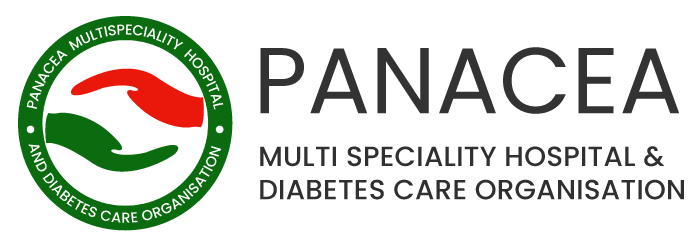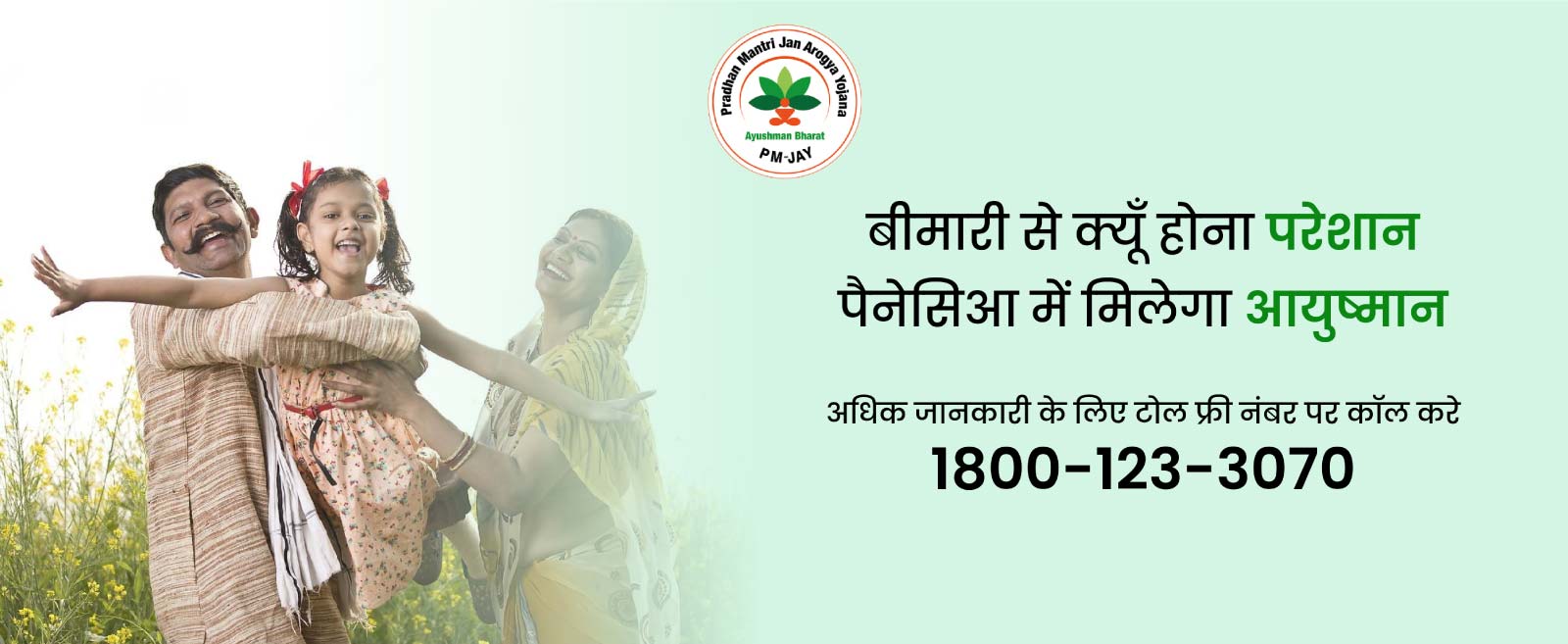
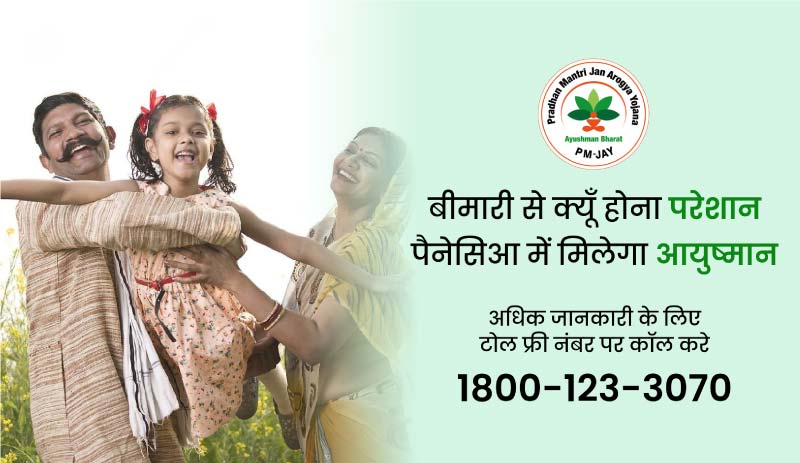
Panacea Hospital, Varanasi’s Top Multispeciality Hospital & Diabetes Care Organisation is empaneled to provide Treatments under Ayushman Bharat Scheme.
Get any treatment or surgery Upto Rs.5 Lakhs for Free
Panacea Benefits
Healthy Food
FREE to all Ayushman Beneficiaries
Private Room
Depending upon the availibility
Consultation
Dedicated Ayushman Bharat Expert
24*7
Medical Care & Treatments
Ambulance
In case of emergency situations
Hassel Free
Hospitalization & treatment process
Statistics

15+ Years
In Healthcare
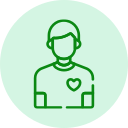
10K+
Patients Treated

50+
Awards & Recognitions
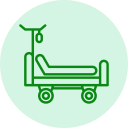
65+
Beds & 20+ Wards

30+
Specialists

3000+
Surgeries
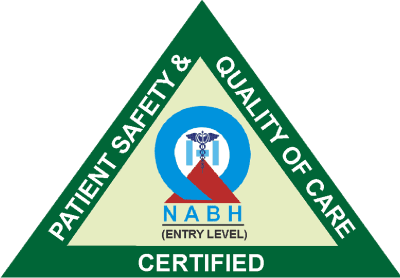
NABH Certified
National Accreditation Board for Hospitals & Healthcare Providers is a constituent board of Quality Council of India, set up to establish and operate accreditation programme for healthcare organisations.
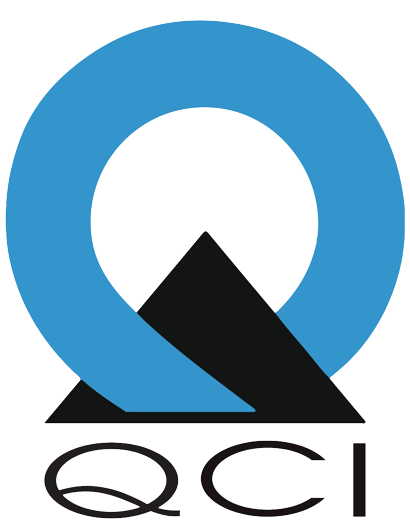
Quality Council of India
A constituent board of Quality Council of India (QCI) To provide accreditation services to hospitals and healthcare providers. National Accreditation Board for Hospitals & Health Care Providers.

Pradhan Mantri Jan Arogya Yojana
के अंतर्गत प्रतिवर्ष प्रति परिवार
5 लाख रुपये
तक का निशुल्क इलाज पैनेसिआ हॉस्पिटल, वाराणसी में उपलब्ध
अधिक जानकारी के लिए हमारे टोल फ्री नंबर पर कॉल करे
Happy Patients
Mai nisha devi gajipur se hu mujhe chest pain tha mai panacea hospital me treatment ke liyi ayi .panacea hospital ke doctor and nurses se kafi help mili. Ab mai bahut swasthya hu. thanks panacea hospital
Mai baljeet apni wife ka treatment panacea hospital me krwaya. Unko itarnal blinding ho raha tha but panacea hospital me itna achha treatment hua ki hmari wife ko bahut jaldi aaram hua. Mai panacea hospital ke doctor our nursing staff sea bhut khush hu.
Panacea hospital bahut achcha Dr Ashutosh Mishra sir bahut hi achcha treatment hota haiimere yaar ka operation hua ab pahleIt's multispeciality hospital where you get all facility in one roof ortho medicine gyne dental skin nefro cardiac all doctors best in town Dr Ashutosh Mishra is very dianymic doctor I was taking treatment for arthiritis and now I am cured fully staff and environment is very satisfying must visit once se bahut achcha hai donon aankhon se dekh sakta hai thank you finish hospital all family
Big shout out to panacea hospital, mere papa ki ortho surgery hui total knee replacement and ab wo proper walk kar sakte hai nd ye surgery ayushman se maine karayi hai , nd mai kahungi app sab sahi hospital chune jisse sahi treatment mil sake, thanks to Dr Deepak Rai Sir and team panacea
Best center for cadio suger renal patient 👍🏻 best Multispeciality hospital in varanasi, Dr Ashutosh Mishra And Dr Pallavi Mishra is my family doctors treating all my family members from years and touch wood everyone is fit nd fine weathers diabetes artheritis heart related issue weight loss everything you get at one place big thumbs up for the team Panacea 👍🏻👍🏻👍🏻
Maine apne papa ko dikhaya h jo ki diabetes ke patient h unki situation bahut kharab sir ne १-२ din apne observation me rakh kar unko thik kiya.
Maine dr.ojha sir ko dikhya mere kidney me stone the jisse ki mujhe yha pe bahut acha treatment mila or sara kam ache se sbhi staff ke through hua thank you
Maine yha pe apne pitaji ko heart ke liye dikhaya tha.. Dr. Pallavi Mam ne bahut hi ache se unko coordinate kiya jisse ki unhe abhi bahut aaram h
FAQs for Ayushman Bharat Yojana
The scheme is targeted at poor, deprived rural families and identified occupational category of urban workers’ families. So, if we were to go by the Socio-Economic Caste Census (SECC) 2011 data, 8.03 crore families in rural and 2.33 crore in urban areas will be entitled to be covered under these scheme, i.e., it will cover around 50 crore people.
AB-NHPS will have a defined benefit cover of Rs 5 lakh per family (on a family floater basis) per year for secondary and tertiary care hospitalisation. It will offer a benefit cover of Rs 5 lakh per family per year. It will subsume the existing Rashtriya Swasthya Bima Yojana (RSBY), launched in 2008 by the UPA government.
To ensure that nobody is left out (especially women, children and the elderly), there will be no cap on the family size and age under the AB-NHPS. The scheme will be cashless and paperless at public hospitals and empanelled private hospitals.AB-NHPS will have a defined benefit cover of Rs 5 lakh per family (on a family floater basis) per year for secondary and tertiary care hospitalisation. It will offer a benefit cover of Rs 5 lakh per family per year. It will subsume the existing Rashtriya Swasthya Bima Yojana (RSBY), launched in 2008 by the UPA government.
The beneficiaries will not be required to pay any charges and premium for the hospitalisation expenses. The benefit also include pre- and post-hospitalisation expenses.
Each empanelled hospital will have an ‘Ayushman Mitra’ to assist patients and will coordinate with beneficiaries and the hospital. They will run a help desk, check documents to verify the eligibility, and enrolment to the scheme.
Also, all the beneficiaries will be given letters having QR codes which will be scanned and a demographic authentication will be conducted for identification and to verify his or her eligibility to avail the benefits of the scheme.
Benefits of the scheme are portable across the country and a beneficiary covered under the scheme will be allowed to take cashless benefits from any public/private empanelled hospitals across the country.
AB-NHPM will cover medical and hospitalisation expenses for almost all secondary care and most of tertiary care procedures. The health ministry has included 1,354 packages in the scheme under which treatment for coronary bypass, knee replacements and stenting among others would be provided at 15-20 per cent cheaper rates than the Central Government Health Scheme (CGHS).
There is no enrolment process in AB-NHPM as it is an entitlement-based mission. Families who are identified by the government on the basis of deprivation and occupational criteria using the SECC database, both in rural and urban areas, are entitled for AB-NHPM. Currently the database is based on census for the year 2011.
A list of eligible families has been shared with the respective state governments as well as state level departments like the ANMs, BMO, and BDOs of relevant areas. A dedicated AB-NHPM family identification number will be allotted to eligible families. Only families whose name is on the list are entitled for the benefits of AB-NHPM.
Additionally, families with an active RSBY cards as of 28 February 2018 will covered. No additional new families can be added under AB-NHPM. However, names of additional family members can be added for those families whose names are already on the SECC list.
The official website of AB-NHPM is www.abnhpm.gov.in. One may visit the site to view and download the beneficiary eligibility and empanelled hospitals list as and when it gets updated.
To control costs, the payments for treatment will be done on package rate (to be defined by the Government in advance) basis. However, hospitals with NABH/NQAS accreditation can be incentivised for higher package rates subject to procedure and costing guidelines.
